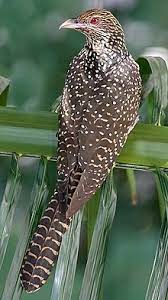Koel Bird is considered one of the cleverest birds. Their scientific name is EUDYNAMYS SCOLOPACEUS and they belong to the cuckoo family the Cuculiform. Their life span is for about 4 to 6 years.
More than 100 species around the world can be found in koel birds. Mostly they are found in the Asian and African regions. It is found in the Indian Subcontinent, China, and Southeast Asia. It forms a superspecies with the closely related black-billed koels, and Pacific koels which are sometimes treated as subspecies.
This koyal bird is the national bird of Jharkhand, India

They have a very sweet and melodious voice which can easily attract someone. Koel birds are mostly hidden under the branches of dense trees, but from their singing, we can come to know about their existence. In Indian culture, we can see the usage of the cuckoo birds in different mythological poems and short stories.
We can hear their singing in the Spring season which is considered as their breeding or reproduction period. You all will be amazed to learn that only, male koyal birds can sing the melodious song, whereas, the female bird doesn’t sing songs. Researchers have recorded over 16 different calls by males, while females emit only 2 kinds of calls. When the atmosphere is calm, we can hear the sound of cuckoos at a distance of 2-3 km.
Koyal bird weighs in, 200-300 grams and the length of their body is from 41-47 cms. The male bird is jet black, with red-colored eyes whereas, female birds have a pattern of grey freckles on their body.

They belong to the omnivorous family, where they eat fruits, vegetables, and various other small and large insects.
Koel birds are considered to be “Brood Parasites” because they lay their eggs in different bird’s nests. The Asian koel is a familiar brood parasite of, crows and mynas throughout the Indian subcontinent the breeding season of koel coincides with house crow which extends from May to September. The female bird is in the chance of finding a ready-made nest of another bird, where she silently lays her eggs and throws the egg of another bird just to make a space for her eggs. Mostly she lays her eggs in Crow’s nest. When the young ones hatch they mimic the crow. Only when they grow big enough to take their first flight, they start singing and the crow would chase them away. Koels and crows agave common neighborhood over the years,

The entire process of this parasite nesting precedes the rain, that’s when the crows pair and build the nests. The only members of the cuckoo family who build their nests are Greater coucal and Southern coucal.








